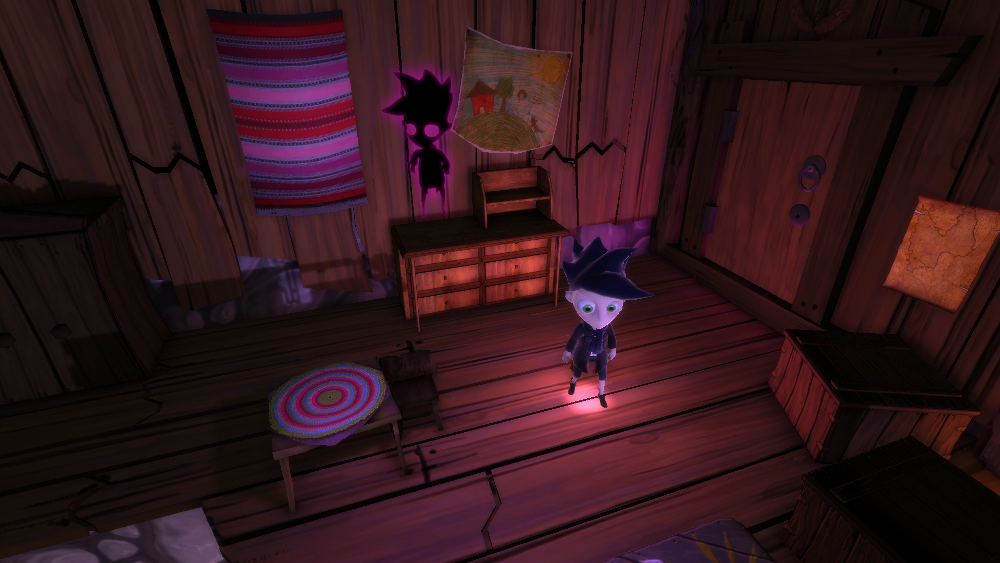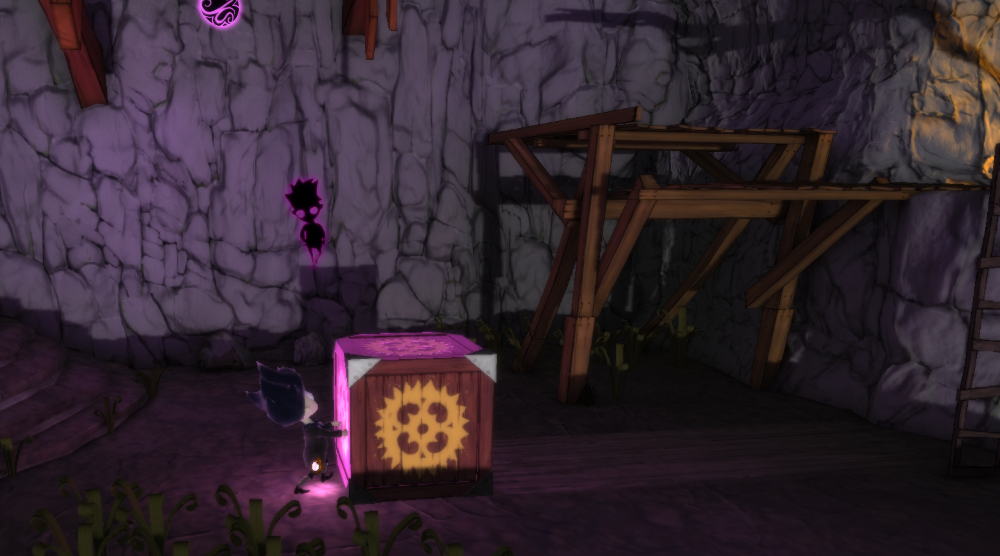Who here hasn't tried playing games with their shadow? It never really works like you hope, as that shady jerk always matches your every move. With Shadow Puppeteer, that old sidewalk shadow-stomp game is taken to a completely different (and cooperative) level. In order to survive in the real world, you have to work with your independently operated shadow who can't leave his two dimensional space. Push crates, ride minecarts, switch lamps off and solve puzzles with your new best friend, all while keeping him safe from the shadow-nomming purple smoke.
Video games have gotten pretty good at playing with the concept of light and dark. One recent example is the 2011 platformer Lost in Shadow that takes place almost entirely in the shade. Instead of looking at iron girders and foreground objects, your attention is shoved to the background where shadows are cast by movable light sources. It flattens your attention out, but at the same time it stretches your concept of two dimensions, as shadows can bend and twist in ways Mario just can't comprehend.

It's a similar situations with Shadow Puppeteer. The game takes place in both the real, three dimensional world and the two dimensional shadows cast by various light sources. Our young protagonist has free movement on his side of things, walking in any direction, jumping and pushing things like crates or carts. His flat buddy can only walk left and right on the shadows, jump and interact with certain objects. But since shadows are two dimensional projections on three dimensional objects, our shadow friend isn't just walking back and forth. He actually travels all over the place, stretching and contorting like shadows do.
With this dual-world set-up going, Shadow Puppeteer proceeds to run your mind through a similar sort of stretching process. Puzzles play on the fact that each character experiences things in his world differently. A great example of this is a tower of smoke rising from a chimney. For 3D people like us, a little bit of dust and air is no problem. But for the shadow that encounters the smoke's shadow, it might as well be the Great Wall. The solution is to slide the solid boy over top the chimney to block the smoke, allowing the shadow boy to pass safely. There are a host of related puzzles, too, such as shoving crates to provide platforms for each character, picking up pieces of wood that serve as movable props and messing around with light sources. Shadow boy isn't always confined to gravity like we are, so things can get pretty strange in later levels.

But let's back up a bit. The story in Shadow Puppeteer is nice and simple and revolves around an evil dude with an evil box that contains an evil purple mist. This mist steals people's shadows, but somehow our protagonist managed to keep his shadow safe. The only logical course of action is to follow that Shadow Puppeteer and get everybody's shadow back. Otherwise... Well, we're not sure what the "otherwise" would be, but shadow is our friend, and we don't want bad things to happen to shadow.
Stages in Shadow Puppeteer are divided into small areas that get longer and more complex as the game progresses. Each one is filled with a handful of puzzles and maybe an action sequence or two, usually with a couple of checkpoints thrown in to cut down on frustration. Shadow Puppeteer jumps back and forth between being a cerebral puzzler and a Battletoads-tough action game. It's a little shocking sometimes to experience the two extremes, and depending on you and your co-op partner's skills in each of the genres, your level of success will vary.
One interesting aspect of Shadow Puppeteer is the fact that the boy and his shadow can't get separated by too much space. A wispy purple umbilical cord shows up when their distance starts to grow too great, and if you continue to stretch that lifeline out, it turns white and eventually snaps, restarting the stage. This doesn't usually cause any problems, as the puzzles tend to be self-contained, but it's something you'll have to keep a wary eye on when one boy starts climbing towers and the other has to wait at the bottom.
